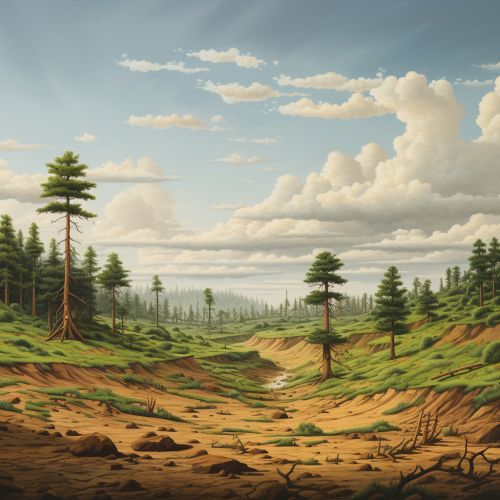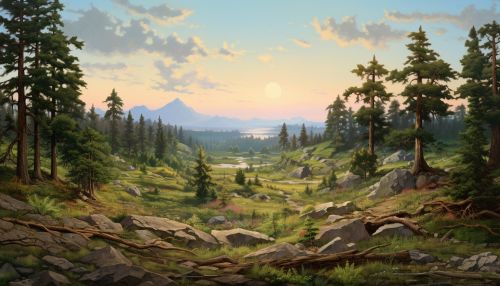Primary succession
Introduction
Primary succession is a fundamental concept in the field of ecology, describing the process by which life colonizes an area that was previously devoid of life. This process is characterized by a series of stages, each with distinctive communities of organisms, leading to a final, stable community known as the climax community.


Process of Primary Succession
Primary succession begins in lifeless areas, such as regions where lava has cooled and hardened, landslides have occurred, or glaciers have retreated. The first organisms to colonize these areas are typically pioneer species, which are hardy species that are the first to colonize previously disrupted or damaged ecosystems.
These pioneer species, often lichens or simple plants, can survive in harsh conditions and begin the process of soil formation. As these organisms die and decompose, they contribute organic matter to the developing soil, creating a more hospitable environment for subsequent colonizers.
Over time, more complex plant species, such as grasses, begin to take root in the developing soil. These species further contribute to soil development and provide habitats for small insects and other invertebrates. This stage of succession is often referred to as the grass stage.
As the soil continues to develop, shrubs and small trees begin to grow. This stage, known as the shrub stage, sees an increase in biodiversity as birds, mammals, and other animals begin to inhabit the area.
Finally, larger trees and more complex plant species begin to dominate the landscape, leading to the formation of a mature forest. This stage, known as the forest stage, represents the climax community in many ecosystems.
Factors Influencing Primary Succession
Several factors can influence the rate and trajectory of primary succession. These include the nature of the initial substrate, the climate of the region, and the types of species that colonize the area.
The initial substrate, or the material that the pioneer species colonize, can greatly influence the rate of succession. For example, lava flows and glacial moraines are typically colonized more slowly than sand dunes or landslide areas.
The climate of the region can also play a significant role in primary succession. In general, succession occurs more rapidly in warmer, wetter climates than in colder, drier climates.
The types of species that colonize the area can also influence the rate and trajectory of succession. Some species, such as lichens, are particularly well-suited to colonizing barren landscapes and can accelerate the process of soil development.
Role in Ecosystems
Primary succession plays a crucial role in the development of ecosystems. It is the process by which life colonizes barren landscapes and transforms them into complex, biodiverse communities.
Moreover, primary succession can help to restore ecosystems that have been disrupted or damaged by natural disasters or human activities. For example, after a volcanic eruption or a landslide, primary succession can help to restore the landscape and create new habitats for plants and animals.
